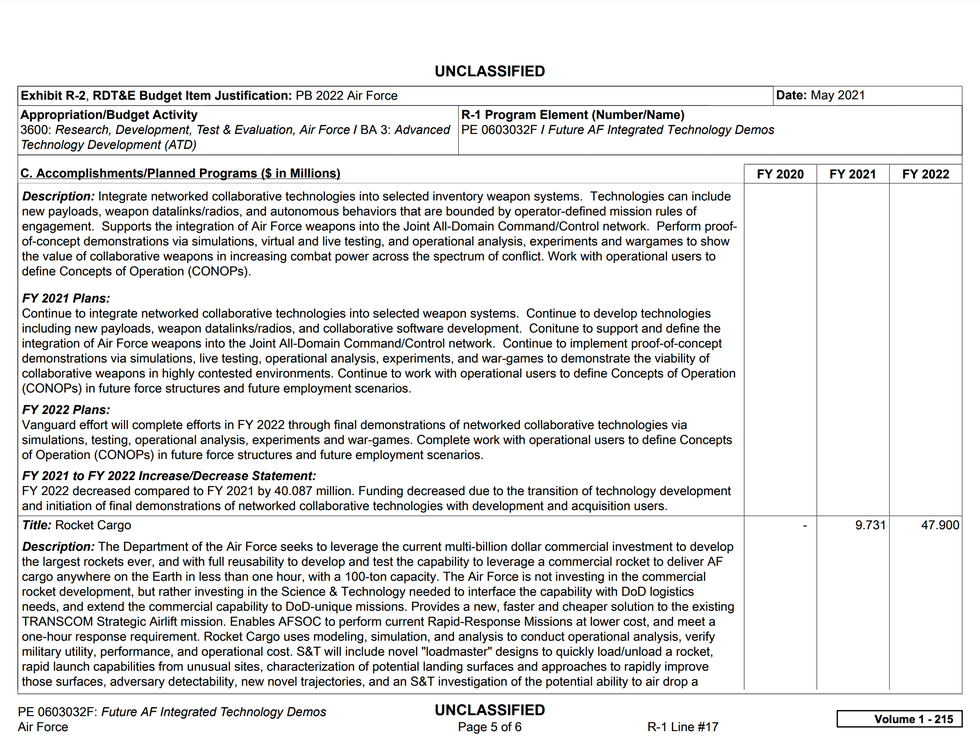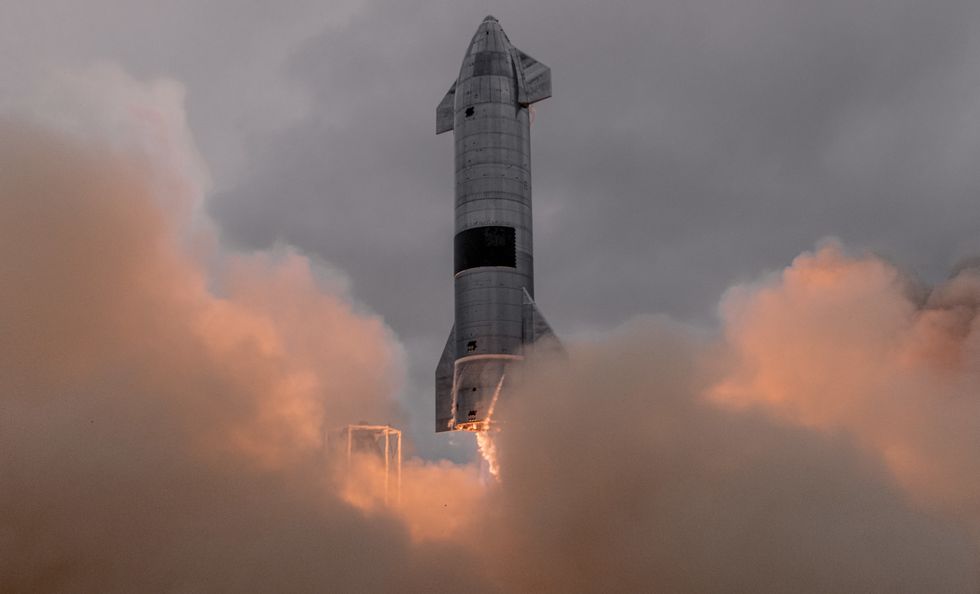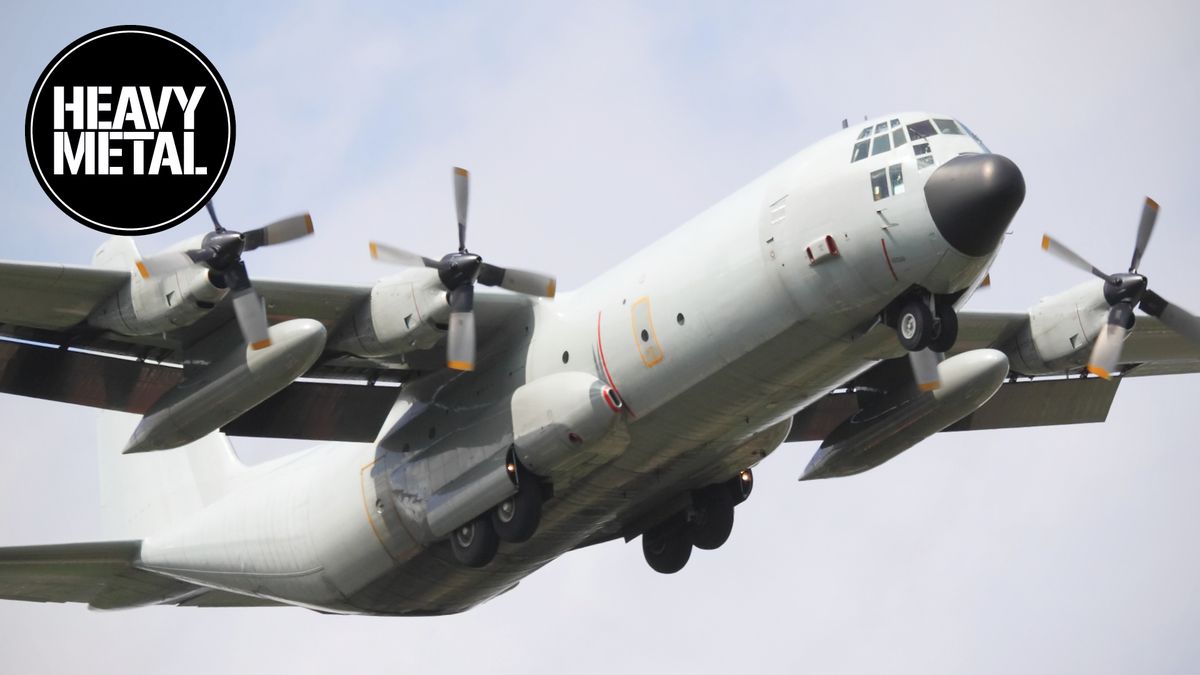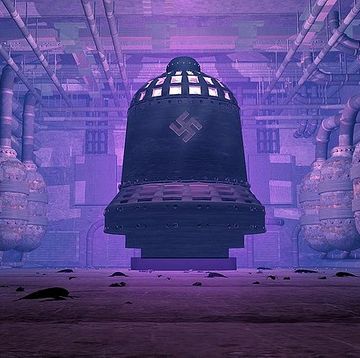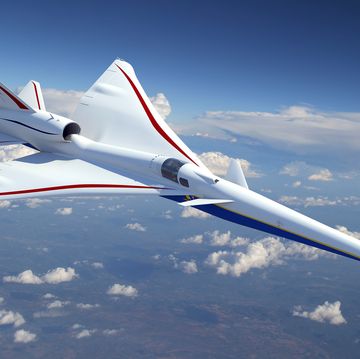- The U.S. Air Force wants $47.9 million to support its Rocket Cargo concept.
- Rocket Cargo calls for a 100-ton rocket capable of airdropping cargo virtually anywhere in the world within minutes.
- This system would use an existing space rocket, modified to suit the service's needs.
The U.S. Air Force wants Congress to cough up $47.9 million to fund a new transport concept for sending supplies and equipment across the Earth in under one hour—via a quick trip through space.
The Rocket Cargo program is a priority for the service. It's outlined in the Air Force's 462-page budget request for Research, Development, Test & Evaluation. The document, published last week, outlines four new (unclassified) technologies the Air Force wants to invest in during the 2022 fiscal year, including the blandly named Rocket Cargo proposal. It doesn't mention a tentative first flight date.
➡ Join Pop Mech Pro for exclusive access to the world’s most elite military tech content.
Rocket Cargo, as the request states, will "demonstrate new trajectories and ways to fly large rockets, the ability to land rockets at austere locations, and design and test an ejectable pod for air drop." The rocket could theoretically fly supplies, equipment, and maybe even troops from the continental U.S. to pretty much anywhere else in the world within a matter of minutes.
The rocket would be an existing commercial design, modified for Air Force purposes. It would be capable of carrying 100 tons and feature an ejectable cargo pod. Rather than land the entire rocket in contested territory—with the cargo sitting 100 feet or more off the ground—the concept calls for a shorter, squatter pod to make the landing instead. That would make the cargo more accessible to logisticians without specialized unloading equipment, and perhaps even allow vehicles to roll off under their own power.
The Air Force began studying the concept in 2020, and consulted with Elon Musk's SpaceX to flesh out the concept.
Here's how it would likely work: The Air Force would maintain a fleet of cargo rockets on standby, each derived around a commercially developed space launch system. The service could quickly launch the rockets from established space bases like Vandenberg on the West Coast, the Kennedy Space Center on the East Coast, or even an "unusual" austere launch location, like a hastily converted parking lot or field.
In the event of conflict, U.S. forces abroad could request a quick Rocket Cargo resupply. After loadmasters place the cargo into the capsule/pod, the rocket would blast off into low-Earth orbit. Over the drop zone, the cargo capsule would separate and slowly descend onto an austere landing zone. Then, loadmasters would finally unload the cargo, ready for battle.
The Air Force says Rocket Cargo won't require the development of a new space launch system, an expensive process that would add years to the system's development. Instead, the service wants to use an existing commercial rocket.
The main contender in the commercial field is the SpaceX Starship, which is the most mature vessel among all commercial superheavy space launch systems. Plus, the Air Force's 100-ton carry objective neatly dovetails with Starship's 100-ton capacity.
The Air Force's prior work with SpaceX on the Rocket Cargo concept makes it even more likely that a collaboration could take place. Although Starship has a different concept for operation—it takes off and lands in one piece—the Air Force could still modify the cargo section to turn it into a detachable pod.
🎥Now Watch This:

Kyle Mizokami is a writer on defense and security issues and has been at Popular Mechanics since 2015. If it involves explosions or projectiles, he's generally in favor of it. Kyle’s articles have appeared at The Daily Beast, U.S. Naval Institute News, The Diplomat, Foreign Policy, Combat Aircraft Monthly, VICE News, and others. He lives in San Francisco.

